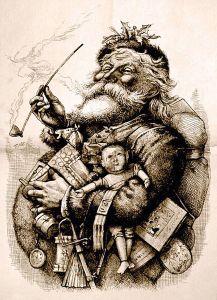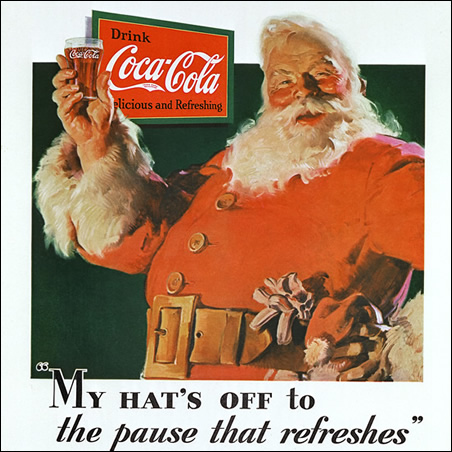
A few years ago, Bankrate.com did a story called Santa’s Net Worth and asked me to opine about that value. Bankrate Story. Bankrate.com figured that with all of the Santas at malls, on street corners for charities, at kids’ and office parties, in commercials, roaming casinos, and so on, Santa should be raking it in big time from royalties, endorsements and sponsorships. I unfortunately could not be the bearer of jolly news on this one. Santa, the persona, has no claim for royalties because there is no intellectual property protection for the concept of a jolly old man dressed in a red with white trim costume, a large white beard and mustache who runs a children’s gift making factory in the North Pole. Concepts, as I covered in an earlier blog post, are not protectable except under laws of confidentiality and trade secrets. And given the public history of the Santa character, there’s likely no one who could claim exclusive rights in it. According to various Internet sources, there may have been a St. Nicholas, a monk who lived in what is today Turkey sometime in the late 200’s. He was mostly known, according to legend, for saving children from being sold into slavery or prostitution. The name Santa Claus is derived from the Dutch version of St. Nicholas — Sint Nikolaas — which was shortened in early New York days to Sinter Klaas. Washington Irving dubbed him the patron saint of New York in his work “The History of New York” published in 1809. But back then, Sinter Klaas was described by some as a “rascal” with a blue three-cornered hat, a red waistcoat and yellow stockings. The Santa we grew up with was created by Thomas Nash, the then well-known political illustrator for Harper’s Weekly as part of a series of illustrations published on Christmas Eve 1862 memorializing the sadness surrounding Union losses during the still raging Civil War. When Christmas evolved into a commercialized holiday starting around 1880 in New York and other cities, Nash’s Santa, as shown below on the left in 1881, was adopted as the real deal. But as times changed, and Christmas became more and more commercialized, the idea of Santa the brand ambassador emerged — Coca-Cola hired artist Haddon Sundblom who created the more modern-looking Santa in 1931 for Coca-Cola Christmas ads. That’s Sundblom’s version to the right of Nash’s.


Given this history, can any Santa be protected by intellectual property law? The answer is Yes! While concepts made public are public domain, specific original expressions of a concept can be protected. Thus, when a company decided to use our client Max & Lucy’s version of Santa (shown below) without permission for various products, we were able to stop that use under copyright law and happily worked out a settlement that gave our clients a little extra spending money for the holidays.

So here’s a little holiday tip from me to you. Don’t make assumptions about what is or is not protected by law, since you never know until it’s often too late. And on that note,
